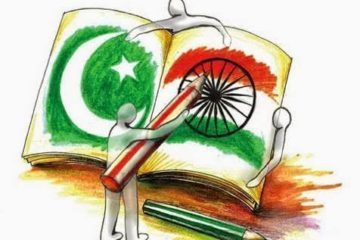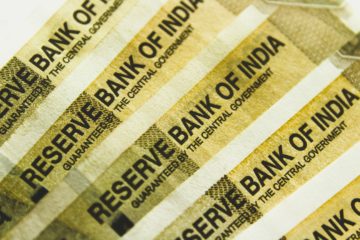Rupee vs Dollar: HOW IT WORKS
The global oil prices are expected to rise with the recent attack on Saudi Aramco refinery’s facility which accounted for 5% of the world oil market. Consequently, rupee is speculated to depreciate with respect to Dollar.
The concern of this article is to throw light on the rise and fall of ₹, which is a timeless debate in our country. This works on the basic principle of demand and supply. To understand this better, let us consider an example of an ice-cream shop.
The ice-cream shop
Let’s say that the shopkeeper sells 100 cones of ice-creams at ₹10/cone and is able to make enough profit. This is the sweet spot in the demand-supply relation where both buyer and seller are profitted.
If the shopkeeper suddenly increases his capacity to 200 cones with demand remaining the same, he will have to compromise to a rate below ₹10/cone. Hence, increased supply with the demand being same, lowers price of commodity.
Suppose he keeps the capacity as 100 cones itself and summer arrives, the demand for those 100 cones will rise and the shopkeeper can charge more than ₹10/cone and people will still be ready to pay for it. Hence, the supply being constant, the rise in demand for a commodity, rises the price also.
Foreign trade & Exchange
Just like an individual who maintains a bank account to manage his earnings and expenditure, a country too has an account to balance it’s trade. We sell and buy commodities with other countries and payments for these happen in Dollars, Gold, Rupees etc. Majority of it happens in Dollars.
Hence, when we export goods such as textiles, cereals, fruits etc to other countries, there will be an inflow of dollars. And, when we import commodities, such as crude oil, coal etc, there will be an outflow of Dollars.
When there is a balance between exports and imports, the amount of Dollars In our foreign exchange account remains constant.
The Analogy
Let us bring out an analogy between the Dollar marker and the ice-cream shop.
The demand for crude oil is constant but the supply of it has fallen. This means less ice-cream and more people to buy. This will lead to an increase in the price of ice-cream (oil).
Therefore, we have to pay more Dollars for the same quantity of oil which we used to import. This means that there will be more outflow of Dollars than inflow which ultimately leads to less number of Dollars in our Foreign exchange account.
The ice-cream here is now Dollars. The demand for Dollars is more but the capacity is less. Hence, the Dollar becomes costlier to India.
Implications of ₹ falling
Suppose 1$=50 Rupees in an ideal situation and 1 barrel of oil costs 1$. When rupee value falls, say 1$= 100Rupees, that means we have to pay 100 Rupees for the same oil which we used to buy at 50 Rupees. Hence, imports of all types become costlier.
But there is another side of this too. Suppose an Indian shirt manufacturer sells a shirt for ₹100/piece. With the earlier rate, other countries had to pay 2$ for the shirt, but now they have to pay just 1$. Hence, there will be a rise in exports when rupee falls and ultimately leading to inflow of Dollars which then balances the dearth of Dollars in the Foreign Exchange account.
When is it critical?
When there are no exports happening due to various cyclical and structural reason, the above-stated mechanism fails and there will be the only outflow of Dollars with no parallel inflow. This is a very critical economic situation for any country.
How to revitalize ₹?
As stated earlier, the exports from a country must be boosted so that more Dollars flow in. We also need to reduce our dependence on imports and find indigenous alternatives which will act as a check on Dollar outflow. Ultimately, steps to strengthen India’s economy from being prone to such global shocks are need of the hour.
This is how rupee vs dollar concept works.
-Shabaz Khan
For related articles, click here
To join Wordanova’s sub on reddit, click here




6 Comments
Jhonny · September 22, 2019 at 6:02 am
Very nice topic and very helpfull also
Rupee vs Dollar: How it works! via /r/economy | Chet Wang · September 24, 2019 at 8:09 am
[…] Rupee vs Dollar: How it works! https://wordanova.com/rupeevsdollar/ […]
Indian Election 2019 - It's Time to do your Duty – Wordanova · January 20, 2020 at 7:36 pm
[…] Rupee VS Dollar: HOW IT WORKS […]
Do you Know What the Reserve Bank of India (RBI) does? · May 29, 2020 at 4:43 am
[…] Rupee VS Dollar: HOW IT WORKS Article 370: All that you need to know Capital punishment & Mercy Plea: Explained! Categories: Mera Bharath mahan Tags: inflationinterest rateRBIrepo ratereserve bank of india […]
PSUs & it's Privatization: An Analysis – Wordanova · June 6, 2020 at 6:04 pm
[…] you Know What the Reserve Bank of India (RBI) does? Rupee VS Dollar: HOW IT WORKS Article 370: All that you need to know Capital punishment & Mercy Plea: Explained! […]
History of Partition of India by Shabaz Khan – Wordanova · July 25, 2020 at 2:04 pm
[…] you Know What the Reserve Bank of India (RBI) does? PSUs & its Privatization: An Analysis Rupee VS Dollar: HOW IT WORKS Categories: Mera Bharath […]